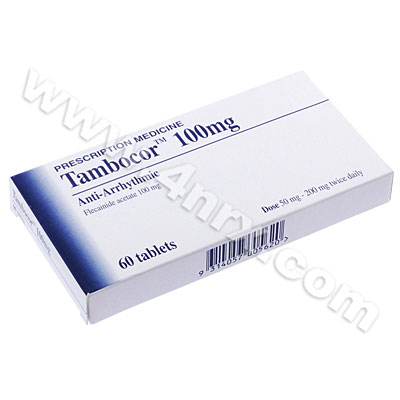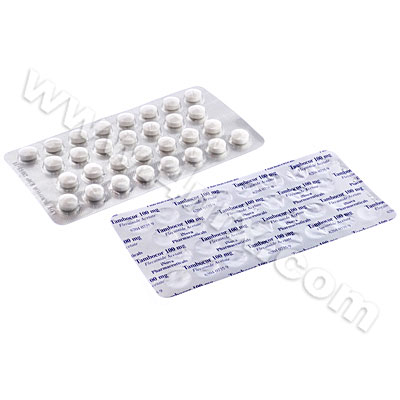 |
Home  Heart Heart  Tambocor (Flecainide Acetate) Tambocor (Flecainide Acetate) |
|
|||||||||
|
Tambocor (Flecainide Acetate)
What is Tambocor (Flecainide Acetate) used for? Tambocor (Flecainide Acetate) is a type of drug known as a Class IC anti-arrhythmic, which is used in the treatment of serious irregular heartbeat, including ventricular tachycardia and paroxysmal supraventricular tachycardia. It can also be used to prevent atrial fibrillation. This drug works by slowing electrical signals in the heart, thereby helping to stabililze the rhythm of the heart. How should I use Tambocor (Flecainide Acetate)? Tambocor (Flecainide Acetate) tablets are taken orally. These tablets are normally taken twice per day, once every 12 hours. However, some patients may be told to take it once every 8 hours. Follow the instructions of your physician. Patients are often hospitalized when they first start taking this drug, so that their condition can be carefully monitored. During this time, your physician may start you out with a low dose, and gradually increase it. Follow all instructions given to you by your physician. What are the side effects of Tambocor (Flecainide Acetate)? Tambocor (Flecainide Acetate) may cause:
If you notice chest pain, breathlessness, loss of appetite, coughing up blood, inflammation of the limbs or flu symptoms you should immediately consult your physician. Please Note Strictly follow all instructions provided to you by your physician or pharmacist while using Tambocor (Flecainide Acetate). Optimum and safe dosage can differ based on the patient and the condition being treated. As this medication may be unsafe for certain patients, it is essential you always inform your physician if you are pregnant or breastfeeding, as well as if you have any allergies, other illnesses, or ongoing health conditions, and if you are taking any other form of medication, supplements, or herbal products. Immediately seek emergency medical care if you have any allergic or hypersensitive reaction. Common signs of a reaction include hives, swelling, skin rashes, chest pains, as well as trouble breathing or swallowing. 

|
|||||||||||||||||